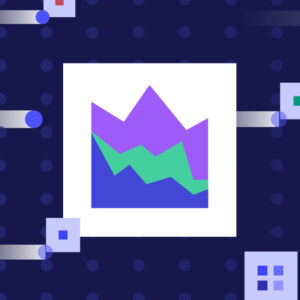Just about every organization needs to do a better job at exploiting its data. High quality data fuels insights that help us be more responsive and move from a reactive to a proactive mode, providing better analytical insights. A modern data analytics platform needs to be central to any major modernization initiative and needs to be an early focus of the initiative.
 Limitations of Conventional Platforms
Limitations of Conventional Platforms
Most conventional analytics platforms favor governance and trust over agility and user empowerment. They focus on ingesting data from structured and internal application data sources. Yet there’s a huge, pent-up demand to mash up all kinds of data from a wider variety of sources, beyond the walls of internal organizations. Users want to get answers to their burning mission questions in more responsive ways. Conventional platforms are also optimized for functional uses, creating many architectural walls at different points in the data flow—leading to latency issues.
What do we want in a Modern Platform?
A modern platform offers more capabilities to provide work at the speed of business and to overcome latency. There are four dimensions of a modern architecture.
- Infrastructure that allows users to securely connect to any data source: on-premises, in another cloud or organization, or in multiple clouds.
- End User Data Prep: The consumers of the data must be able to prepare and model the data they need—and catalog it, so it can be shared with limited IT staff engagement.
- Telling a Story: Rather than just displaying a dashboard, users want the power to actually tell the story while sharing data findings.
- Governance is the backdrop. Modern platforms enable governance controls and standards as the underpinning of every layer.
In addition to these dimensions, actual capabilities must be enabled in a modern platform:
1. The ability to near real-time streaming as data changes in the real world so data is immediately available to decision makers.
2. Triggers so that when particular events happen in the outside world, there will be the capacity to rapidly expedite the flow of data from the source to users.
3. The capabilities to rapidly curate and enrich data, as appropriate for the type of data and decisions that needs to be made, involve specific technologies and tools in a modern platform.
4. The ability to virtually connect the data and determine what data needs to be physically stored. Modern platforms do not require you to physically lift and shift all data from a source into a physical warehouse.
5. With conventional platforms data preparation is done through an IT department, but a modern platform allows individual consumers and decision makers to prepare the data themselves.
Elements of a Modern Platform
The modern platform has the capabilities to monitor, explore, investigate, and automate. The tools are very sophisticated, and self-service is available, enabling citizen data scientists in addition to more traditional data scientists.
The Analytics Workbench allows consumers to touch the data directly. For example, at a monthly meeting, executives view data about the organization and ask, “Why did that happen? What if the numbers looked this way?” They want to explore the data. In a conventional platform you would have to get back to them with that information at a later date. The analytics workbench allows that interaction to happen right in the meeting so you can drill down and answer the why questions.
Exploring: The platform takes these terms in the search bar and actually creates the sequel query, going down to the database on the backend. It does a complex query of multiple different joins, different tables, and data sources. The end user just asks simple question. The system takes that question and handles the complexity on the backend without the user’s knowledge.
Data Science Laboratory and AI Hub: The data science laboratory allows experts to do algorithms predicting and providing prescriptive information with the data in the environment. The AI hub provides capabilities for very sophisticated simulations and algorithms using natural language processing. It automates by embedding the results into a business process or an operational system as quickly as possible.
Roadmap
Organizations need an explicit roadmap—a defined strategy— for moving quickly, but at low risk, from today’s legacy data and analytics environment to the target environment. A roadmap helps you achieve mission outcomes, reduce the latencies, and reduce cost and vulnerabilities. The roadmap has two main objectives. Here are the elements of a successful roadmap to a modern platform:
- Outcomes: Focus first on organizational objectives. People often look at modernizing platforms from the perspective of IT vulnerabilities or saving money. But you also need to ask, “what outcomes do we need to achieve?” Looking at the capabilities and dimensions listed above and establish which ones you most need.
- Prioritize: Based upon your outcomes, prioritize which capabilities and dimensions you actually need.
- Select: Choose infrastructure based on your priorities. You will require a portfolio of tools, not a single tool, to accomplish what you need in your roadmap. As a first step, consider augmenting what you already have. Modern tools that align with your existing technology will get quick results and build momentum.
- Schedule: Document how and when you will deploy each new capability and tie it back to business outcomes.
IT modernization will be more successful if organizations focus on data and analytics early in the process. This is the heart of your transformation. A modern platform requires multiple dimensions and capabilities at the speed of business enablement. Focus on the business outcomes you want to achieve and develop a roadmap for how to meet your mission objectives quickly, at low risk.
Request a Demo Today to learn how ThoughtSpot can help your team achieve faster insights and Check Out Our On-Demand Webinar “IT Transformation: Roadmap to Data Driven Agency Powered by Modern Architecture”.






